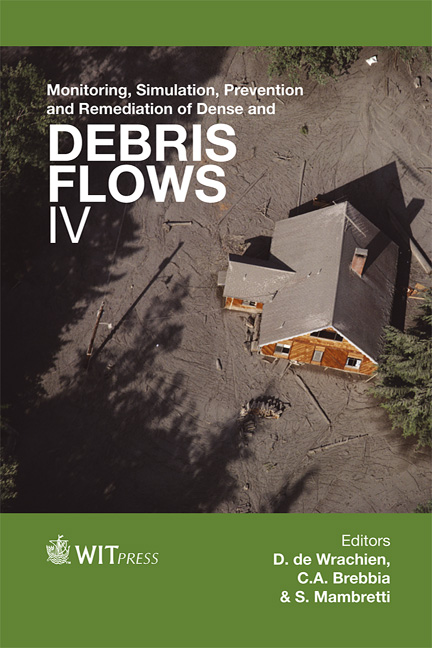Two Methods For Measuring Internal Velocity Of Debris Flows In The Laboratory
Price
Free (open access)
Transaction
Volume
73
Pages
11
Page Range
61 - 61
Published
2012
Size
1,995 kb
Paper DOI
10.2495/DEB120061
Copyright
WIT Press
Author(s)
F. Wei, H. Yang, K. Hu, Y. Hong & X. Li
Abstract
The velocity of debris flows is a very important parameter for debris flow research and design of debris flow control works. The velocity of debris flows can be divided into surface velocity and internal velocity. The surface velocity of debris flows has been researched widely while the internal velocity is minimally researched because there is no available method for measuring internal velocity. In this paper, we developed two methods for measuring the internal velocity of debris flows in laboratory. One method is using impact pressure detecting, and the other is using shear forces detecting. In the former method, the internal velocity is calculated by the impact pressure detected by pressure sensors according to the relationship between velocity and kinetic pressure. In the later method, the internal velocity is calculated using the distance between two detecting sections and the time difference between the two waveforms of shear forces measured at both sections. Keywords: debris flow, internal velocity, impact force, shear force, flume experiment. 1 Introduction In the research of dynamics of debris flow and design of debris flow control works, the velocity of debris flows is a key parameter. The velocity of debris flows can be classified into surface velocity (at free surface of debris flow) and internal velocity (inside the debris flow). The surface velocity has been researched widely because it is easy to measure in the field and laboratory. Arattano and Marchi used ultrasonic sensors to detect the times of debris flow
Keywords
debris flow, internal velocity, impact force, shear force, flume experiment.





